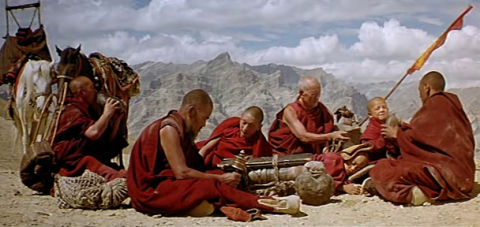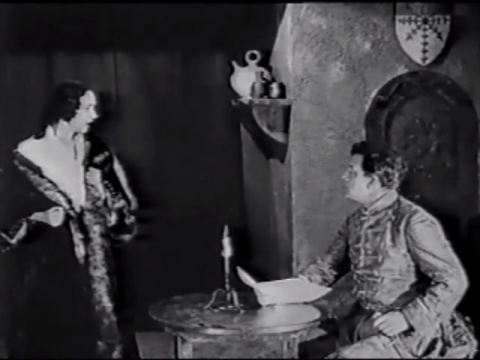The Internet Archive is a strange site, but also rewarding. The structure leaves much to be desired, but the positive side is that in order to find what you are looking for, you are likely to stumble upon other interesting films in the process. Like when I was looking for the film Samsara (2011), which I reviewed a few weeks ago.
After some little confusion, it dawned upon me that there are in fact two films with the same title at the Archvie, and the other Samsara also seemed interesting. It is hard to imagine two films that are more different; yet both embody the Sanskrit word ‘Samsara’, which in Buddhism refers to the constant cycle of life – birth, death, rebirth – and yet both evoke the same feelings of wonder and awe.
Samsara is about the Buddhist monk Tashi. He is young, yet he has been in the monastery for most of his life. He is very devoted, but after meeting the young woman Pema, he suddenly starts to have feelings of doubt. Is this all there is to life? What about love? Family? He decides to leave the monastery to seek Pema and try to find out.
Samsara is a film about people trying to cope with everyday life, in a part of India where most things are what they have been for centuries. People weave their clothes and farm their fields in the same way as their grandfathers and grandmothers did. But modern life is drawing closer, along with all its blessings and curses.
This is a very beautiful film, filled with the magnificent nature of countryside India. But even though nature is important and breathtaking, focus is always on the humans living in it; on their strenghts and their faults. This is a very warm and loving film.
This film is best enjoyed when you have plenty of time and nothing to disturb you for a few hours. Samsara is a film that allows, and requires, room for contemplation.
Samsara
Download link
Year: 2001
Running time: 2 h 19 min
Directors: Pan Nalin
Image quality: Good
Resolution: Low (608×288)
Sound quality: Excellent
Best file format: Cinepack (1.4 G)





